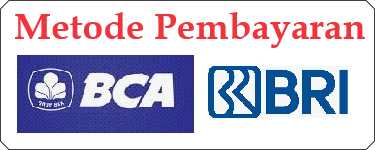PERANAN KELEMBAGAAN KELOMPOK USAHA PERHUTANAN SOSIAL HUTAN ADAT DI NEGERI HUTUMURI KECAMATAN LEITIMUR SELATAN KOTA AMBON
DOI:
https://doi.org/10.69840/marsegu/1.4.2024.327-345Keywords:
Institutional, Social Forestry, Customary institutionsAbstract
Customary Forest is one of the social forestry schemes in the framework of sustainable forest management by utilizing indigenous communities as the main actors in order to improve welfare, environmental balance and socio-cultural dynamics. Customary Forest is a forest located within the territory of the customary law community. This study aims to examine the role of the Social Forestry Business Group (SFBG) and customary institutions in the management of Customary Forests in Hutumuri village.. The research method used was descriptive qualitative, with data collected through interviews and field observations. Sampling is done by purposive sampling where sampling is based on previously known characteristics or properties of the population (Sugiyono, 2016). The results showed that SFBG has an important role in managing forest resources sustainably and improving the welfare of local communities. SFBG functions in social forestry business development, compliance with regulations, supervision, evaluation, and reporting. The SFBG organizational structure includes a chairperson, secretary, treasurer, planning, implementation, and supervision, each with specific roles. Customary institutions also play an important role in the planning and implementation of institutional improvement programs, such as the inauguration of soa heads and saniri negeri, the establishment of SFBG, and training on forest product processing. In addition, there is a role in the application for the determination of customary forests to the Minister of Environment and Forestry, the location of customary forests belongs to the state or Soa, and the marking of boundaries involves each Soa. In conclusion, the synergy between SFBG and customary institutions is crucial for the successful management of Hutan Adat in Negeri Hutumuri.
Downloads
References
Bogason P, 2000. Public Policy and Local Governance.Institutions in Post Modern Society. Cheltenham, UK, Edwar Elgar.
Deliarnov. 2006. Ekonomi Politik. Jakarta : Erlangga
Djogo et al. 2003. Kelembagaan dan Kebijakan dalam Pengembangan Agroprofesi. Bogor.
Hamzah, H., Suharjito, D., & Istomo, I. (2015). Efektifitas kelembagaan lokal dalam pengelolaan sumber daya hutan pada masyarakat Nagari Simanau, Kabupaten Solok. RISALAH KEBIJAKAN PERTANIAN DAN LINGKUNGAN Rumusan Kajian Strategis Bidang Pertanian dan Lingkungan, 2(2), 116-128.
Keraf A.S. 2010. Etika Lingkungan Hidup. Jakarta: Penerbit Buku Kompas.
Knight, J. 1992. Institution and Social Conflict. Cambridge University Press
Koentjaraningrat. 1997. Kebudayaan, Mentalitas,dan Pembangunan. PT Gramedia Pustaka Utama, Jakarta.
Mackay, Renald; Dabela S.; T. Smutyle; J. Borges-Andrade; dan C. Lusthans. 1998. ISNAR’s Achiviements, Impacts, and constraints: An Assessment ofOrganizational Performance and Institutional Impact. ISNAR, Netherland.
Maliati, N. 2018. Gender dan Jenis Kelamin. Universitas Malikulsaleh. Aceh. https://isnet.or.id/gender-dan-jenis-kelamin/ (download 20 Noovember 2023).
Miles, M.B dan Huberman, A.M. 1992. Analisis Data Kualitatif, Buku Sumber Tentang Metode-Metode Baru (Penerjemah : T.R. Rohidi). Penerbit Universitas Indonesia. Jakarta.
Moleong, L. J. 2010. Metodologi Penelitian Kualitatif. Bandung: PT Remaja Rosdakarya.
North, D. C, 1990. Institutions, Institutional Change And Economic Performance. Cambridge:Cambridge University Press
Ostrom, E. 1990. Governing the Commons. The Evolution of Institutions for. Collective Action. Cambridge University Press
Pasaribu, L. O. 2007. Kelembagaan Pengelolaan Tana'Ulen Pada Masyarakat Dayak Kenyah di Pampang, Kecamatan Samarinda Utara, Kalimantan Timur.
Pejovich, Svetozar. 1999. The Transition Process in an Arbitrary State: The Case fo rthe Mafia. International Centre for Economic Research. Italy
Peraturan Menteri Lingkungan Hidup Dan Kehutanan Republik Indonesia Nomor 4 Tahun 2023 Tentang Pengelolaan Perhutanan Sosial Pada Kawasan Hutan Dengan Pengelolaan Khusus
Peraturan Menteri Lingkungan dan Kehutanan Nomor 83 Tahun 2016 Tentang Perhutanan Sosial. Jakarta.
Peterson. A. Steven. Public Policy: Enscyclopedia of Public Adminisstration and Public Policy (Rabin, Jack (editor)). New York: Marcel Dekker, Inc.
Schotter, A. 1981. The Economic Theory of Social Institutions. Cambridge University Press.
Suharjito, D., & Saputro, G. E. (2008). Modal Sosial Dalam Pengelolaan Sumberdaya Hutan Pada Masyarakt Kasepuhan, Banten Kidul (Social capital of forest resource management on Kasepuhan Community, Banten Kidul). Jurnal Penelitian Sosial dan Ekonomi Kehutanan, 5(1).
Sahyuti, 2006. 30 Konsep Penting dalam Pembangunan Perdesaan dan Pertanian. PT Bina Rena Pariwara. Jakarta
Sugiyono. 2016. Metode Penelitian Kuantitatif, Kualitatif dan R&D, Cetakan ke-24. Bandung: Alfabeta
Sirait M, Fay C dan Kusworo A. 2001. Bagaimana Hak- Hak Masyarakat Adat dalam Mengelola Sumberdaya Alam. ICRAF, LATIN, P3AE UI, BOGOR, Indonesia
Wiltshire, A. H. 2016. The Meanings of Work in a Public Work Scheme in South Africa. International Journal of Sociology and Social Policy, 36(12). 18
Downloads
Published
Issue
Section
License
Copyright (c) 2024 Jezenia Lelapary, Thomas Silaya, Iskar Iskar (Author)

This work is licensed under a Creative Commons Attribution-ShareAlike 4.0 International License.




















